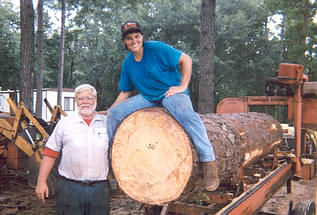Question
I start my help at $8 an hour and move them up as they learn more and are able to work on their own. I've been through a lot of employees in the past several years. I've found few that were worth long-term consideration, but those either didn't like the work or got a far better paying job. It seems like the pool of employees is not only smaller, but is of poor quality (don't want to work, show up, etc.).
How do you attract good employees and retain them? Are you able to find experienced help or do you have to train them from the ground up? I rarely find help that has any experience milling, so I wind up training them, which takes at least 2-3 months.
Forum Responses
I also had a hard time finding help, mainly because of high-paying corporate work that offered benefits and futures. Sawing is a love of wood. I chose to remain a sawing service for reasons more of goal than gold. It is difficult to convince a young fellow that helping in my operation is a means to an affluent lifestyle.
My first and favorite experience with hired help was with high school and community college students who wanted to earn money on their schedule rather than on a punch clock. To control the situation, I had them work for themselves rather than for me. I told them when I had a job that required outside help and suggested the amount to be charged, usually by the board foot at 3 to 5 cents per. This was for off-bearing and flat stacking on a trailer or behind the mill. If the customer wanted wood moved or stickered, they were to offer their help at an increased footage charge and that work was to be done after the milling hours.
It was a pleasure to see the light come on in my workers' eyes when they realized that the more productive the operation, the more they made in a day. I had a few who would work me to death and not want to break. When this old man stopped for a breather they were cleaning and aligning logs, greasing the mill and learning about trees, sawing and customer relations. These kids showed up on the job between classes to relieve one another and worked into the night to help the customer with stacking and cleanup.
I've lost those contacts since the kids in the neighborhood have grown and gone, but could develop them again by doing volunteer work at the local high school or by developing relationships at clubs, church or other family-oriented organizations.
The other good help I had was retired military. They worked under the same rules as the kids and it fit their lifestyle because they were mostly looking to get out of the house. This gave them the freedom to work when they pleased.
I have never had either leave me high and dry on a job. Below is a picture of one of my favorites.

When this girl moved on to the railroad, she was running that mill she is sitting on. She had learned to saw, sell, market, mechanic and budget. She was developing a customer base of her own. The salary and benefits with the railroad were much more than she could make sawing wood and she has a little girl to raise. She will still return to sawing one day and I am glad that I had a hand in developing the interest.
My problems of acquiring help were solved by tapping a large pool of available labor and providing an interesting and happy work place. These youngsters spoke so highly of the industry that others were waiting in line to replace them when they moved on.
The high school in my town had mechanics students build a bandmill and they are starting a program in bandmilling.
Editor's Note: Find employment in woodworking with Trade Job Placement (website), a leading recruiter for wood product manufacturing jobs.